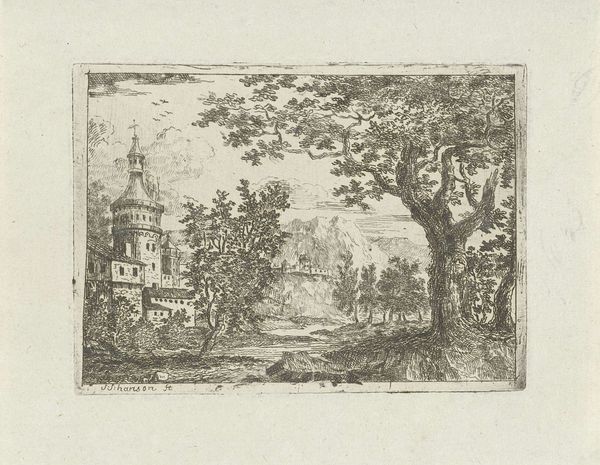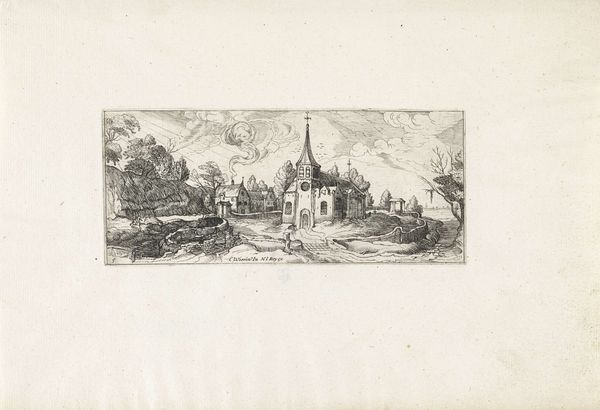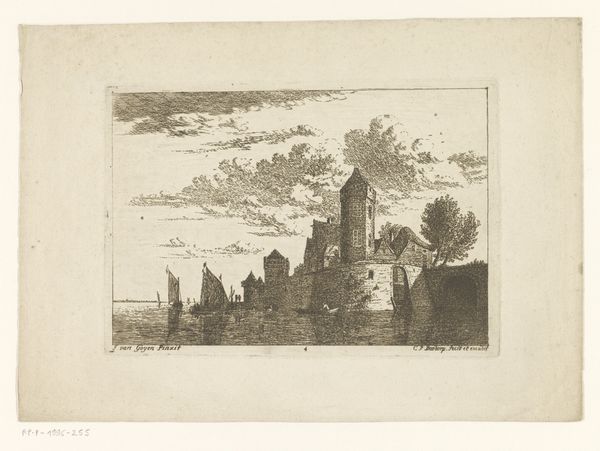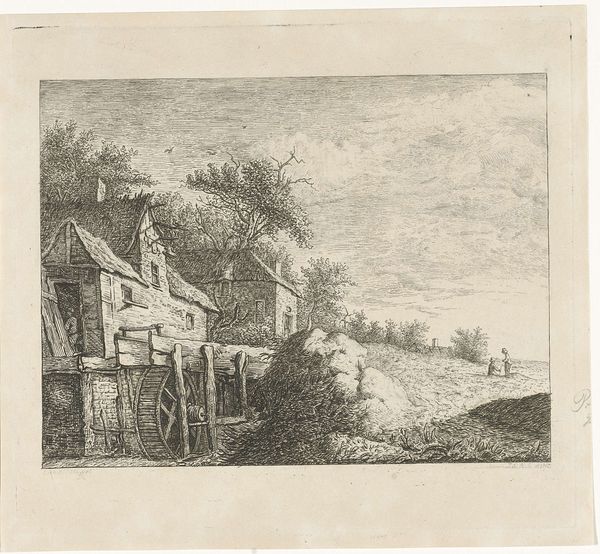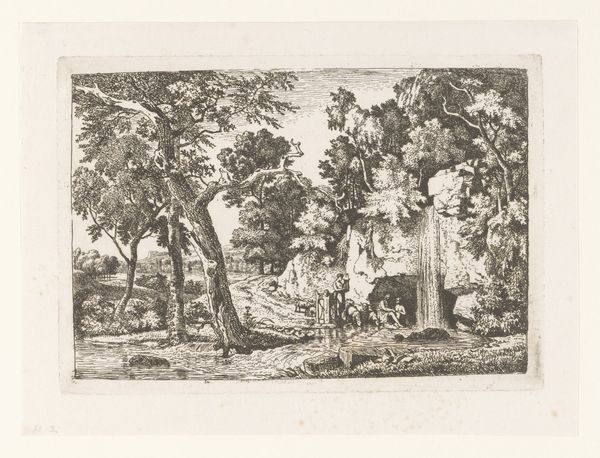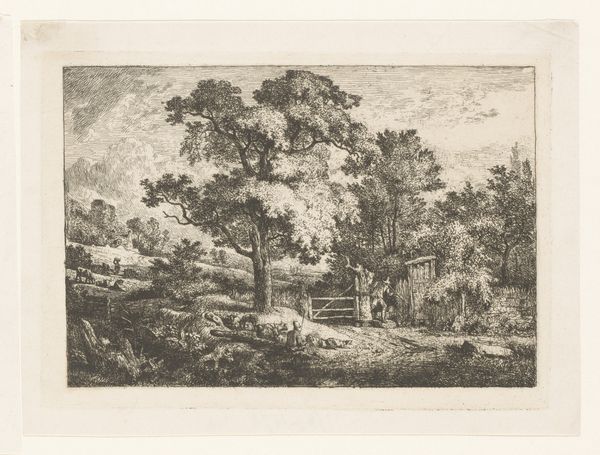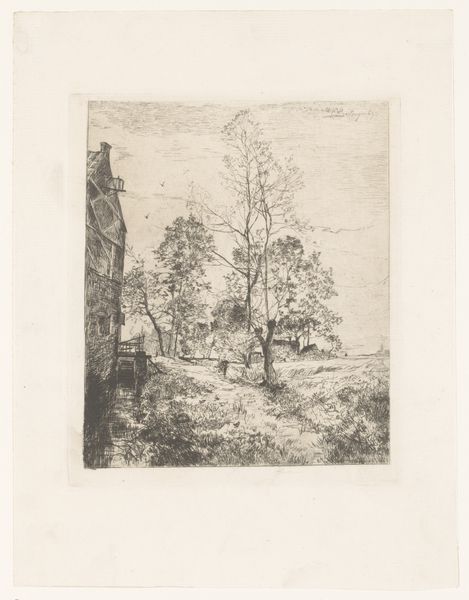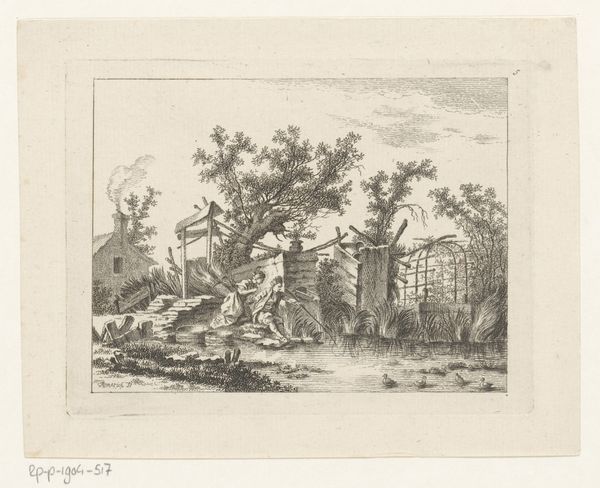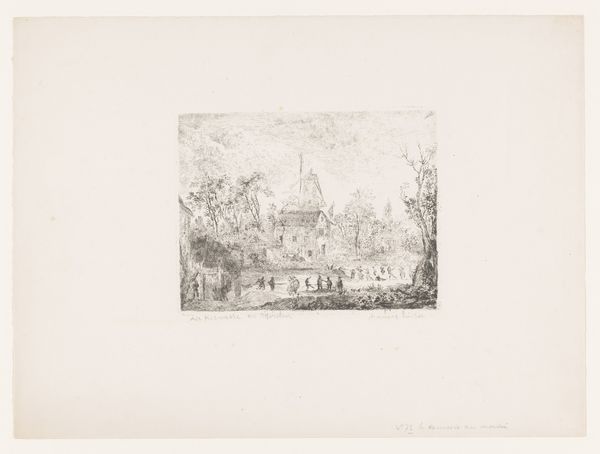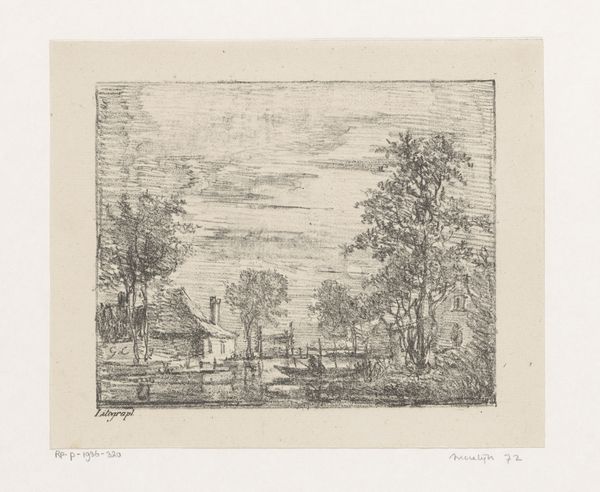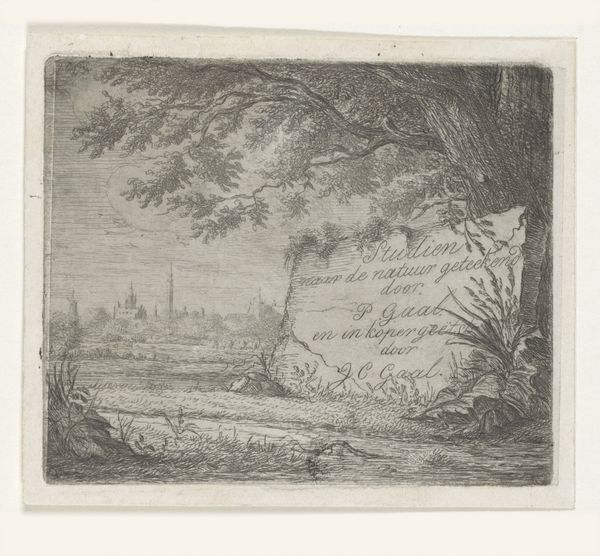
drawing, print, etching, paper
#
drawing
#
ink painting
# print
#
etching
#
landscape
#
charcoal drawing
#
paper
#
line
#
cityscape
#
realism
Dimensions: 119 × 217 mm (image); 162 × 238 mm (plate); 220 × 312 mm (sheet)
Copyright: Public Domain
Curator: Here we have Rodolphe Bresdin’s "City with Stone Bridge," an etching from 1865, currently residing at The Art Institute of Chicago. Editor: It's incredibly detailed. The overwhelming feeling I get is of… density. A very compressed pictorial space, full of tiny, precise marks. It feels almost claustrophobic despite being a landscape. Curator: Indeed. The density stems from Bresdin's remarkable technique. Note the intricate layering of lines, creating tonal variations despite the monochrome palette. Observe, in particular, how line work produces varying opacities. We can also decode the interplay of positive and negative space, and what that says about form vs the immaterial. Editor: Yes, but who is included or excluded from this city space? Are the rural folk on the peripheries welcome in the city, or are they systematically pushed out? And to what extent did Bresdin, given his political leanings, critique that power dynamic in his piece? He was known to make his art and the art world generally more accessible. Curator: An insightful point, but the formal complexity suggests other possibilities. Consider, for instance, the composition itself. The stark contrast between the densely packed city and the relative emptiness of the foreground river. The relationship might reveal social tensions. Editor: Or is he highlighting that stark divide? He may have experienced social tensions within his lifetime. His work may reveal how marginalized figures navigate the structures that are often made to exclude them. Curator: Your reading introduces another relevant element: Bresdin's avowed Realism, that seems apt. This style gives a powerful authenticity to social critique by showing the grittiness of the everyday. Editor: Right. A technique used often by realist artists during moments of rapid change. This etching prompts consideration for broader structures of access that affect urban living. Curator: True. The more we examine Bresdin’s meticulous layering and the strategic distribution of form, the richer our reading becomes. It shows his skill as a technician. Editor: Ultimately, what strikes me is how art continues to ignite discourse about vital topics that shape lived experiences across demographics. That etching isn't just aesthetically dense; it is meaningful.
Comments
No comments
Be the first to comment and join the conversation on the ultimate creative platform.
